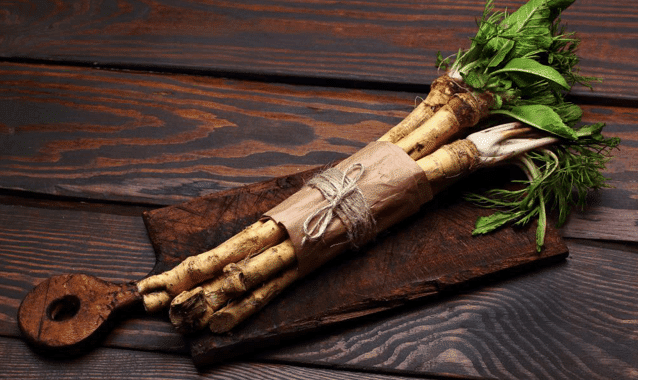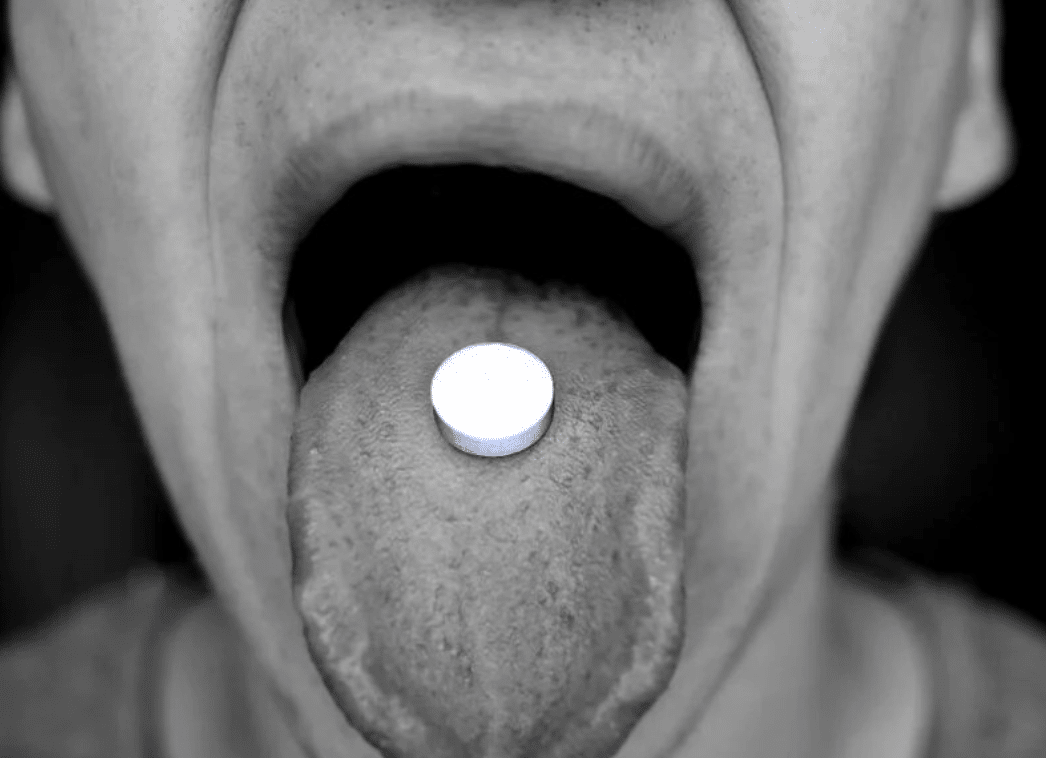Horseradish, a root vegetable with a spicy and peppery flavor, belongs to the plant family Brassicaceae. Horseradish contains sulfur-containing secondary metabolites called glucosinolates that are responsible for its unique and pungent taste.
The root vegetable has different glucosinolates like glucobrassicin, gluconasturtiin, neoglucobrassicin, and sinigrin. When you consume horseradish, glucosinolates are broken down into isothiocyanates, the alleged cancer-preventive compounds in cruciferous vegetables.
Additionally, horseradish has minerals like calcium, magnesium, phosphorus, and potassium. Freshly grated horseradish has a low fat content. It is also low in calories and full of vitamin C. However, heat may destroy horseradish root’s beneficial compounds, so use it raw or cook it briefly.
Horseradish in traditional medicine
Horseradish root can be ground into a spice, turned into a condiment, or used medicinally. The Greeks and Romans traditionally used horseradish as a poultice to treat backaches, menstrual cramps, and muscle pain. Horseradish is administered orally to relieve coughs or used as an aphrodisiac.
In European countries, horseradish was used as a remedy for different conditions like asthma, colic, cough, toothache, and scurvy. Grated horseradish poultices were traditionally used to relieve pain caused by gout and sciatica. The root vegetable can also be infused in milk to clarify the skin and remove freckles. Horseradish is also a potent diuretic and it is used to treat urinary tract infections (UTIs).
In Poland, horseradish leaf and root is used to make bread and pickles as a flavoring agent and preservative, respectively. In modern cuisine, horseradish is used to make condiments and sauces. The root vegetable can be paired with beef, roasted vegetables, or seafood.
100% organic essential oil sets now available for your home and personal care, including Rosemary, Oregano, Eucalyptus, Tea Tree, Clary Sage and more, all 100% organic and laboratory tested for safety. A multitude of uses, from stress reduction to topical first aid. See the complete listing here, and help support this news site.
Modern research findings on horseradish
Several studies have looked into the cytotoxic activity of the glucosinolates in horseradish against various cancer cell lines. Allyl isothiocyanate, which is produced via sinigrin metabolism, suppressed the growth of tumors in vitro. It also had protective action against further DNA damage. Experts posit that glucosinolates can help boost the liver’s ability to detoxify carcinogens. (Related: Horseradish contains 10x more glucosinolate than broccoli, making it a potent cancer-fighting superfood.)
Data from a rat model suggests that sinigrin in horseradish can affect various organs involved in carbohydrate and lipid metabolism such as the intestine, liver, and pancreas. According to the same study, sinigrin can help minimize triglyceride levels in the blood. The study authors noted that sinigrin can help reduce elevated triglyceride levels, which is a risk factor for coronary artery disease, after meals.
In a separate clinical study, researchers compared the effects of various pungent spices on weight management factors like appetite, energy expenditure, and diet-induced thermogenesis. The study findings revealed that healthy men who consumed a meal supplemented with horseradish showed a significant decrease in heart rate and increase in diastolic blood pressure unlike the control group, who didn’t consume the root vegetable.
Meanwhile, another study has shown that allyl isothiocyanate has antimicrobial activity against different organisms like Escherichia coli (E. coli), a known food-borne pathogen, and Helicobacter pylori, a bacterium that causes stomach ulcers and increases the risk for gastric cancer. Researchers suggest that horseradish can be used to prevent or hasten recovery from UTIs and eliminate bacteria in the throat that may cause bronchitis, cough, and other related conditions.
Findings from an in vitro study revealed that isothiocyanates extracted from horseradish had antimicrobial activity against 10 different oral microorganisms. Isolated allyl isothiocyanate from horseradish also had antiproliferative activity against Pseudomonas aeruginosa, a multidrug-resistant bacterium, in vitro.
Other cruciferous vegetables like broccoli and Brussels sprouts also contain these compounds, but horseradish contains at least ten times more glucosinolates compared to other members of the Brassicaceae family.
How many pounds have you lost this month? At Dieta Efectiva you can lose 10-12 lbs your first week and 2-5 lbs every week after. Visit us dietaefectiva.netto learn more about our program.







